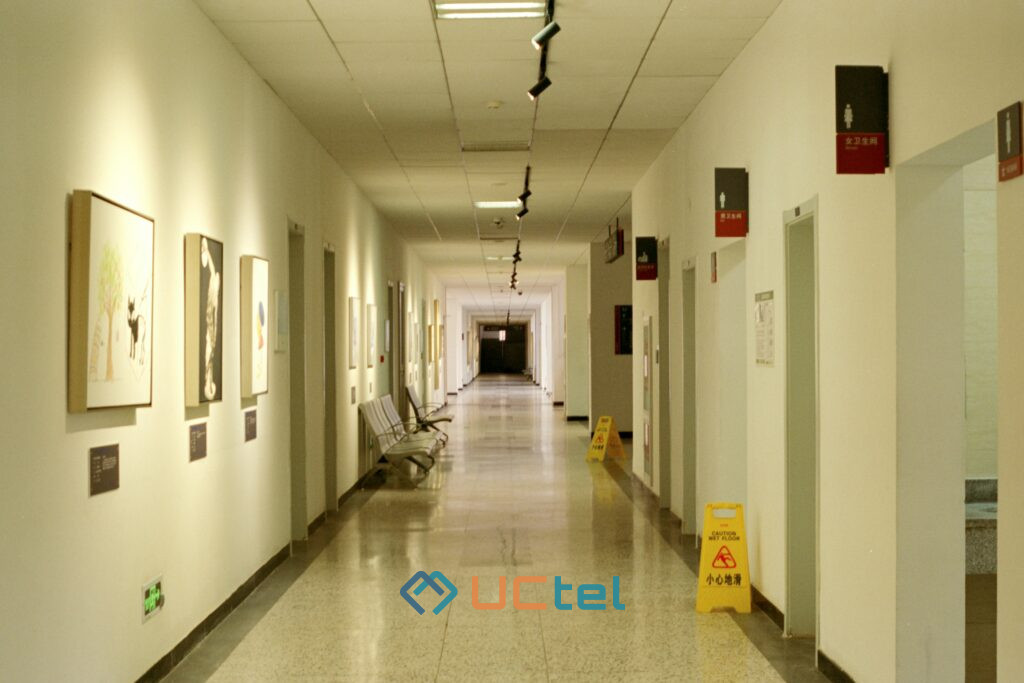How to Ensure Reliable Mobile Signal for Emergency Staff in Hospitals?

Table of contents
Updated September 2025
Emergency staff in hospitals cannot afford dropped calls or dead zones. From ER teams to ICU nurses and rapid response units, mobile connectivity is mission-critical. In this guide, we answer the exact question: How to ensure reliable mobile signal for emergency staff in hospitals? You’ll find clear strategies, technology comparisons, and best practices for resilient hospital-grade coverage.
Follow-Up Questions
Why is reliable mobile signal critical for emergency staff?
- Emergency staff rely on instant communication, alerts, and data access. Any delay in message delivery or call failure can compromise patient outcomes and staff coordination.
What makes hospitals particularly challenging for mobile signal?
- Hospitals use shielding materials, have dense layouts, multiple floors, and sensitive medical equipment—all of which block or distort signal. Staff mobility also requires seamless handovers between zones.
What are the best technical options for hospital mobile coverage?
- Distributed Antenna Systems (DAS), small cells, and private LTE/5G networks are most reliable. Boosters can work in limited cases but require caution. Hybrid solutions are often ideal.
How do you design for resilience and redundancy?
- Use backup power, redundant cabling, modular design, automatic failover, and continuous monitoring to ensure uptime even during outages or equipment failures.
How do you prevent interference with medical equipment?
- Through EMC testing, shielding, filters, and strict zoning rules. Coordination with biomedical engineers is essential to ensure safety compliance.
What should hospitals plan for in the future?
- Private 5G slices, IoT device integration, adaptive antennas, and convergence of WiFi + cellular. Planning for these now avoids costly redesigns later.
Comparing Mobile Signal Solutions in Hospitals
| Solution | Best For | Strengths | Considerations |
| Passive DAS | Medium hospitals with decent donor signal | Cost-effective, scalable | Performance depends on external signal quality |
| Active DAS | Large, complex hospitals | Uniform coverage, multi-operator | High upfront cost, long deployment time |
| Small Cells | High-density areas (ER, ICU, imaging zones) | High capacity, controlled coverage | Requires backhaul & operator support |
| Signal Boosters | Limited-use areas (wings, basements) | Quick, low-cost improvement | Risk of oscillation, compliance issues |
| Private LTE / 5G | Hospitals with high data & IoT demand | Secure, future-proof, fully controlled | Significant capital & regulatory overhead |
| Hybrid | Most hospitals | Flexible, tailored to needs | Requires expert integration & design |
Designing for Reliability and Resilience
In hospitals, mobile systems must be treated like critical infrastructure. This means designing for redundancy at every level: power, cabling, and equipment. Backup UPS and generators ensure systems remain online during blackouts. Redundant cabling paths and modular segmentation keep failures contained. Automatic failover and load balancing minimise disruption. Continuous monitoring with real-time alerts allows IT teams to address issues before they impact staff.
Use Case Scenarios
| Hospital Size / Need | Recommended Solution | Why |
| Small hospital or clinic | Passive DAS + selective boosters | Quick deployment with regulatory compliance |
| Medium-sized hospital | Active DAS + small cells in high-demand zones | Balances coverage, capacity, and cost |
| Large tertiary hospital | Hybrid active DAS + private LTE/5G backbone | Ensures resilience, scalability, and 5G readiness |
Why Uctel Is Different
- Proven in healthcare: Uctel has delivered mobile coverage solutions in NHS hospitals and critical care environments.
- Compliance-first approach: Every deployment meets Ofcom rules, EMC safety standards, and hospital regulations.
- Minimal disruption: Phased rollout methods ensure hospital operations and patient care remain uninterrupted.
- Future-ready: Uctel designs for 5G, IoT, and modular expansion from day one.
Hospitals choose Uctel because they need a partner who understands both telecom engineering and clinical safety constraints.
Conclusion & TL;DR
Reliable mobile signal is a life-critical enabler for emergency staff in hospitals.
- Best practice: Design systems as mission-critical infrastructure with redundancy, monitoring, and compliance built-in.
- Best solution: Active DAS or hybrid networks with small cells and private LTE/5G provide the most resilience.
- Key takeaway: Hospitals must plan not just for today, but for future IoT and 5G demands.
Talk to Uctel today to assess your hospital’s mobile coverage and get a resilience-focused upgrade plan.
Frequently Asked Questions
Can boosters be used in hospitals?
- Only regulator-approved boosters, and only as part of a carefully engineered design. They are rarely the sole solution.
How do mobile systems avoid interfering with MRI or medical equipment?
- By enforcing exclusion zones, applying shielding/filters, and validating through EMC testing with clinical engineers.
What’s the typical deployment time?
- Passive DAS may take weeks, while large-scale active DAS or private LTE networks may take several months with phased rollouts.
Can one system support all mobile networks?
- Yes—neutral host DAS and private LTE can support multiple operators and network slices simultaneously.
Why not just rely on hospital WiFi?
- WiFi is important, but mobile signal ensures continuity for emergency calls, roaming staff, and clinical alerts independent of hospital IT load.





